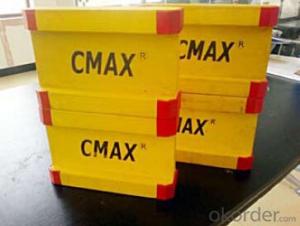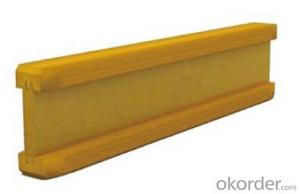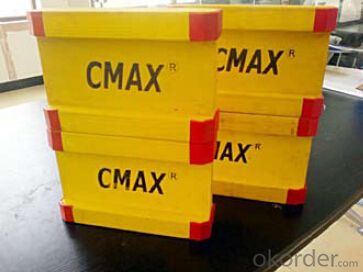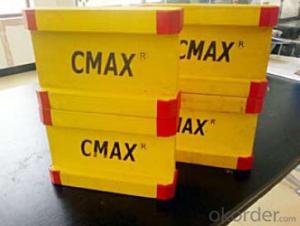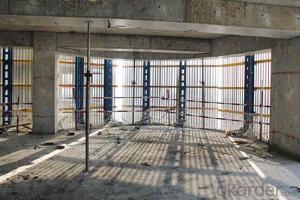Timber-Beam for formwork and scaffolding system
- Loading Port:
- Tianjin
- Payment Terms:
- TT OR LC
- Min Order Qty:
- 50 m²
- Supply Capability:
- 1000 m²/month
OKorder Service Pledge
OKorder Financial Service
You Might Also Like
Characteristics:
◆ Standardized production lines.
Supply capability: 3000m/day, Lmax = 6600mm.
◆ Finger jointing of the flange and web, the strength of timber beam is highly improved.
Max. shearing force failure load:40KN
◆ Well treated to prevent from water penetration or erosion, so the service life maximally extended.
Normally, CNBM timber beam H20 can be used for 4 to 5 years, the exact using time would depend on maintenance & storage.
◆ Robust caps at the end of the girders protect against damages.
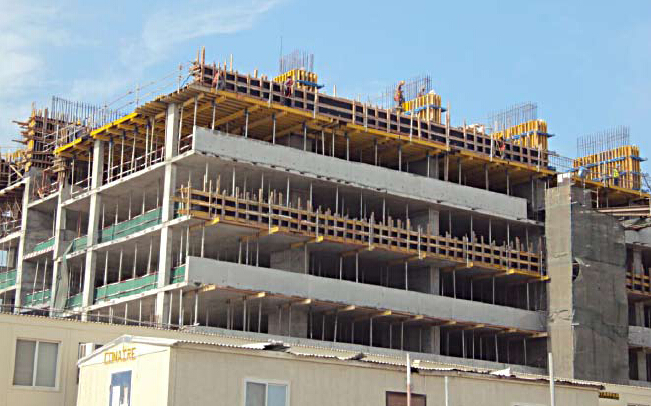
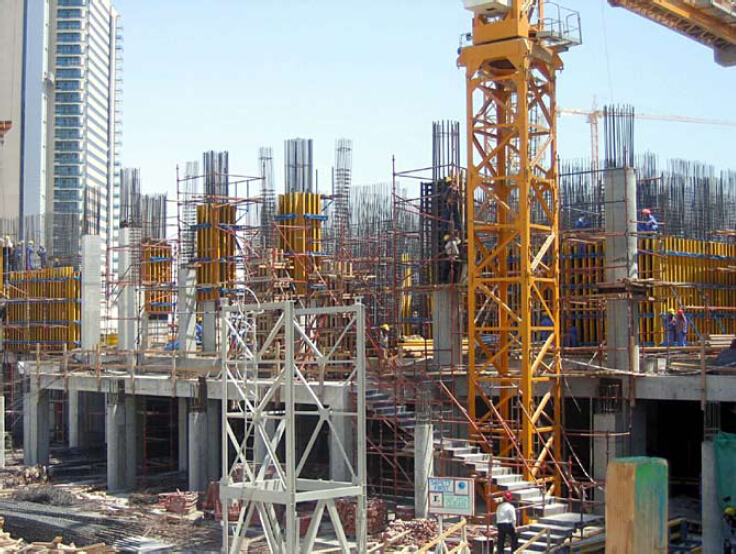
- Q: What are the common challenges faced during steel formwork installation?
- Some common challenges faced during steel formwork installation include ensuring proper alignment and leveling of the formwork, handling heavy and bulky steel components, securing the formwork against displacement during concrete pouring, and maintaining structural stability and integrity throughout the installation process. Additionally, coordinating with other construction activities, such as rebar placement and concrete pouring, can also be a challenge to ensure smooth and timely progress of the formwork installation.
- Q: How does steel formwork handle concrete pouring and consolidation?
- Steel formwork is a highly durable and rigid material that is capable of handling the pressure and weight of concrete during pouring and consolidation. Its strong structure ensures that the formwork remains stable and does not deform under the weight of the concrete. The smooth surface of steel formwork also allows for easy and efficient pouring and spreading of concrete, ensuring a consistent and even distribution. Additionally, steel formwork's ability to withstand the pressure exerted during consolidation prevents any deformation or movement, resulting in a solid and well-structured concrete structure.
- Q: Can steel formwork be used for curved or irregular structures?
- Yes, steel formwork can be used for curved or irregular structures. Steel formwork is highly flexible and can be easily shaped or modified to accommodate various curves and irregular shapes. It offers excellent strength and durability, making it suitable for complex structures that require precise and customized formwork solutions.
- Q: How does steel formwork affect the concrete finish?
- Steel formwork can have a significant impact on the concrete finish. Firstly, steel formwork provides a smoother and more uniform surface compared to other types of formwork materials such as wood or plastic. This can result in a smoother and more aesthetically pleasing concrete finish. Additionally, steel formwork provides a higher level of dimensional accuracy and stability during the concrete pouring and curing process. This means that the concrete is less likely to shrink or warp, resulting in a more precise and even finish. Furthermore, steel formwork allows for tighter joints and fewer seams, which can minimize the occurrence of surface imperfections such as cracks or air pockets. This is particularly important for achieving a high-quality finish in architectural or decorative concrete applications. Moreover, steel formwork provides better resistance to moisture and chemicals, reducing the risk of staining or discoloration on the concrete surface. It also offers a higher level of durability, ensuring that the formwork remains intact throughout the entire concrete pouring process, resulting in a smoother and more consistent finish. In summary, the use of steel formwork positively affects the concrete finish by providing a smoother surface, better dimensional accuracy, fewer surface imperfections, improved resistance to moisture and chemicals, and enhanced durability.
- Q: What are the different edge protection systems available for steel formwork?
- Some of the different edge protection systems available for steel formwork include edge protectors, guardrails, safety nets, and toe boards.
- Q: How does steel formwork handle different concrete early age strength development?
- Steel formwork, a versatile and durable material commonly used in construction for shaping and supporting concrete structures, offers several advantages when dealing with different concrete early age strength development. To begin with, during the initial stages of the concrete's curing process, steel formwork provides exceptional support and stability. This is critical as the concrete gains strength and begins to solidify. The inflexible nature of steel formwork prevents any distortion or displacement, ensuring that the concrete maintains its desired shape and structure as it sets. Moreover, steel formwork guarantees a high level of dimensional accuracy. This allows for precise and consistent shapes and sizes of the concrete elements being constructed. This is particularly significant during the early age strength development phase, as any variations or irregularities in the formwork could have a negative impact on the overall strength and integrity of the concrete. Additionally, steel formwork exhibits high resistance to moisture and chemical reactions. Concrete undergoes a hydration process, where it absorbs water and undergoes chemical reactions to gain strength. Since steel formwork is non-absorbent, it prevents excessive moisture from being absorbed by the concrete, which could hinder strength development or cause cracks. Furthermore, steel formwork does not chemically react with the concrete, ensuring that the desired early age strength development is not compromised. Another advantage of steel formwork is its reusability. Unlike other formwork materials like wood or plastic, steel formwork can be easily disassembled and reused for multiple construction projects. This not only reduces construction costs but also guarantees consistent and reliable formwork performance, regardless of the concrete's early age strength development requirements. In conclusion, steel formwork is a dependable and efficient solution for handling various concrete early age strength development tasks. Its stability, dimensional accuracy, resistance to moisture and chemical reactions, and reusability make it an ideal choice for shaping and supporting concrete structures during the crucial initial stages of curing.
- Q: What are the different types of formwork connectors used in steel formwork?
- There are several different types of formwork connectors used in steel formwork, including wedge clamps, wedge bolts, pin and wedge systems, and snap ties. These connectors are essential for securely joining formwork panels together and ensuring the stability and strength of the formwork structure.
- Q: Can steel formwork be used in extreme weather conditions?
- Yes, steel formwork can be used in extreme weather conditions. Steel is a durable and strong material that can withstand harsh weather conditions such as extreme heat, cold, rain, and wind. Unlike other materials like wood or plywood, steel formwork is not affected by moisture or temperature variations, making it suitable for use in extreme weather conditions. Additionally, steel formwork provides better stability and structural strength, ensuring the safety and integrity of the construction project even in adverse weather conditions. However, it is important to consider the proper protection and maintenance of steel formwork to prevent corrosion or damage that can occur over time due to exposure to extreme weather conditions.
- Q: What are the environmental benefits of using steel formwork?
- There are several environmental benefits of using steel formwork in construction projects. Firstly, steel formwork is highly durable and reusable. Unlike traditional wooden formwork, which is often discarded after a single use, steel formwork can be used multiple times. This reduces the demand for raw materials and lowers the amount of waste generated during construction. Additionally, the reuse of steel formwork reduces the need for frequent manufacturing, which in turn reduces energy consumption and greenhouse gas emissions associated with production processes. Secondly, steel formwork provides a superior quality finish to concrete structures. This eliminates the need for additional finishes or coatings, reducing the consumption of other materials such as paint or plaster. By using steel formwork, construction projects can avoid the use of potentially harmful chemicals found in these additional finishes, benefiting both the environment and human health. Furthermore, steel formwork is resistant to moisture and weathering, making it less prone to degradation over time. This results in longer-lasting structures that require fewer repairs and replacements. The extended lifespan of buildings constructed with steel formwork reduces the environmental impact associated with demolition and reconstruction. Moreover, steel formwork allows for precise and accurate construction, resulting in less material wastage during the concrete pouring process. This efficiency reduces the amount of excess concrete that needs to be disposed of, minimizing the environmental impact of concrete production and waste management. Lastly, steel formwork can be recycled at the end of its useful life. Steel is one of the most recycled materials in the world, with a high recycling rate and minimal loss of quality during the process. By recycling steel formwork, the demand for new steel production is reduced, conserving natural resources and reducing the energy consumption and emissions associated with steel manufacturing. In summary, the environmental benefits of using steel formwork include reduced material waste, lower energy consumption and greenhouse gas emissions, minimized use of additional finishes and coatings, extended building lifespan, and the ability to be recycled. These advantages make steel formwork a sustainable and eco-friendly choice for construction projects.
- Q: How does steel formwork compare to plastic formwork in terms of cost and durability?
- In terms of upfront cost, steel formwork is generally pricier than plastic formwork. The cost of steel formwork encompasses material, fabrication, and transportation expenses, which can be higher in comparison to plastic formwork. Conversely, plastic formwork is relatively more affordable due to its lower material and production costs. Nonetheless, when it comes to durability, steel formwork holds a significant advantage. Steel is renowned for its strength and endurance, enabling it to withstand substantial loads and repeated use over time. It is resistant to wear and tear, deformation, and damage caused by external factors such as weather conditions or mishandling. This durability ensures that steel formwork can be reused multiple times, resulting in long-term cost savings. On the other hand, plastic formwork, despite being cost-effective initially, may have limitations in terms of durability. Plastic is not as sturdy as steel and may be susceptible to deformation or cracking, especially under heavy loads or inadequate handling. Although plastic formwork can still be reused multiple times, it may require more frequent replacement or repair in comparison to steel formwork. To summarize, steel formwork may have a higher initial cost but offers superior durability and longevity. Plastic formwork, on the other hand, is cheaper but may not withstand heavy loads or repeated use as effectively as steel. The choice between the two depends on the specific requirements of the project, budget constraints, and the anticipated lifespan of the formwork.
Send your message to us
Timber-Beam for formwork and scaffolding system
- Loading Port:
- Tianjin
- Payment Terms:
- TT OR LC
- Min Order Qty:
- 50 m²
- Supply Capability:
- 1000 m²/month
OKorder Service Pledge
OKorder Financial Service
Similar products
Hot products
Hot Searches
Related keywords
